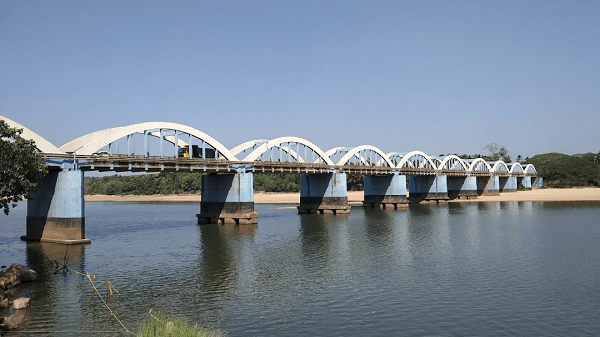Kuttippuram Bridge Poem Summary"The Kuttippuram Bridge" is a poem written by Edasseri Govindan Nair, a prominent Malayalam poet, and dramatist, and translated into English by A J Thomas. He was known as Edasseri and cared deeply about the agricultural crisis and the issues that the average person faced. The Kuttippuram Bridge" ("Kuttippuram Paalam"), one of his poems that have been featured in most anthologies, was first published in the Mathrubhumi weekly in 1954 before being added to his collection of poetry Karutha Chettichikal (1955). 
The poem, which was composed in response to the building of a bridge across the Nila River, expresses the poet's unease and skepticism towards the modernization process that is gradually encroaching on the rural area in which he lives. Here, the bridge represents modernism. The writer contrasts the river with the recently built bridge by expressing pride in being on it and joy at the pinnacle of modernization's real advancement. Standing on the bridge, the poet feels elation or bliss at being so high. The narrator claims that it cost 23 lakh rupees to construct the Kuttippuram Bridge. The bridge is large and robust, towering above the Perar River. No boat would dare cross the river during the flood season, and no kite could soar over the river. Thoughts of the bridge defying the rivers might make the narrator chuckle with pride as the bridge stands tall. The poet remembers the time of pre-industrial agriculture and rural life when people lived close to nature along the banks of the Nila/Perar. But urbanization has encroached on the towns and villages, so people are cut off from the natural world. The idea of trees, flowers, and traditional "kavus" being extinct saddens the narrator. He worries if the river will one day degrade into a stinking sewer. His village used to be a serene, lovely spot.Due to the increased traffic and disappearance of the paddy fields and meadows, it is now louder and less appealing. Walls are being built everywhere, which causes a space problem. There is a lot of traffic and fighting between individuals during the day and at night. In the neighborhoods, strangers have started settling. There are more disputes among strangers now. The neighbors no longer know one another. They are now complete strangers to one another. The narrator expresses his worries about the Perar River. The narrator is distressed by the village's slow disappearance due to usurping modernism. The lines that describe the poet playing poothankol in the past contrast with the lines where the poet is currently standing motionless and gazing down at the river illustrate this point. The author describes the bridge's construction in the first few paragraphs of the poem, expressing his pride in what humans have accomplished. They wonder about the river's journey and are grateful for the bridge's contribution to bridging communities, minds, and hearts. He expresses his concern about the riverbank perhaps being swept away in the fourth stanza. In the next stanza, he recalls the time he spent growing up on the riverside with his friend, the river. He fears that everything that made up rural life?the river, the pipal tree, the plowman's songs?will be lost as urbanization progresses. The author foreshadows the effects of urbanization and how they would influence people's lives in the final few stanzas of the poem. The poem reflects the bittersweet sadness for childhood memories linked with the river while also noting the changes that time brings. It highlights the bridge as a representation of development and connectedness while simultaneously emphasizing the value of protecting the past and valuing the present. This poet asks readers to think about how experiences shared by people are related and how fleeting life is. The bridge acts as a reminder that even if life is temporary, the bonds we create and the memories we hold onto are still a part of the shared human experience. ConclusionThe poem emphasizes the bridge's function as a link between several worlds, representing the variety and continuous mobility of human experiences. As a channel for feelings and memories, it serves as a reminder of how resilient people are in the face of adversity. The poem encourages readers to consider the interconnection of humankind and the importance of our travels by reflecting on the passing of existence and the everlasting strength of the connection.
Next TopicLady Lazarus Summary
|
 For Videos Join Our Youtube Channel: Join Now
For Videos Join Our Youtube Channel: Join Now
Feedback
- Send your Feedback to [email protected]
Help Others, Please Share









